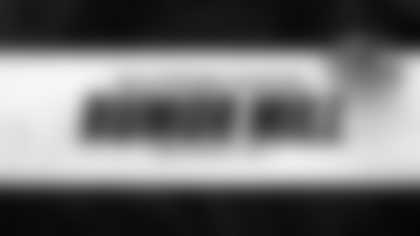PLEASE NOTE:The opinions, analysis and/or speculation expressed on BaltimoreRavens.com represent those of individual authors, and unless quoted or clearly labeled as such, do not represent the opinions or policies of the Baltimore Ravens' organization, front office staff, coaches and executives. Authors' views are formulated independently from any inside knowledge and/or conversations with Ravens officials, including the coaches and scouts, unless otherwise noted.
The Ravens are receiving kudos for their offseason maneuvering largely because they took an aggressive approach to fixing what ailed them in 2009.
When they decided they needed better receivers to amp up their passing game, they took bold steps, making a big trade for Anquan Boldin, signing Donte' Stallworth and bringing back Derrick Mason before he could leave via free agency.
When they decided they needed to add youth and spring to their defensive front, they took more bold steps, using valuable draft currency (their top picks) to add linebacker Sergio Kindle and defensive tackle Terrence Cody. They also used the draft to add depth at tight end, a pair of possible successors to Todd Heap – another major item on their to-do list.
What's wrong with this picture? Not much. As a result of their bold maneuvering, the Ravens are likely going to be the consensus pick to win the AFC North, ahead of the Bengals and Steelers.
Of course, the only problem with taking bold steps is you can't address all of your problems that way. In any given offseason, a team only has so many trade triggers to pull, so many high draft picks to use, inevitably leaving some items on the fix-it list to be addressed in other ways, with lesser moves, smaller steps, patience. That is what the Ravens are doing with their secondary.
The situation was cloudy, to say the least, at the end of last season. All-Pro safety Ed Reed put his chances of returning at 50-50 because of injury issues, and cornerbacks Lardarius Webb and Fabian Washington also were looking at returning from major knee injuries that had ended their seasons prematurely. Only two of the four starting spots in the pass defense could be penciled in, with cornerback Domonique Foxworth and safety Dawan Landry.
But the Ravens have indeed used a patient approach rather than bold steps. They tacitly elected to follow that course when they balked at taking a cornerback with the 25th pick in the first round of the draft, choosing instead to deal the pick for three later picks. With that move, they basically stated they felt their secondary would be all right in the end in 2010. We'll see if that proves to be the case. But some recent signs are encouraging.
First, there was the news that Reed had undergone a hip procedure, seemingly indicating that he planned to return. Although Reed has never commented himself, it seems he still wants to play football – huge news for the pass defense.
Then, Ravens Head Coach John Harbaugh said this week that team doctors had told him Webb was "significantly" ahead of schedule in recovering from knee surgery, raising hopes that he would be able to contribute in 2010. It's too early to know for sure, of course, but Harbaugh pointed out that Webb was rehabbing every day "beyond what you would expect a guy to do to get back." The young man obviously is driven to prevent his setback from setting his career back any more than it already has. (Harbaugh also said Washington was ahead of schedule.)
Throw in this week's quiet signing of veteran cornerback Travis Fisher for insurance purposes and the expected return of safety Haruki Nakamura from an injury, and the Ravens actually have more defensive backs than they need – Foxworth, Landry, Fisher, Chris Carr, Tom Zbikowski, and hopefully Reed, Webb, Washington and Nakamura, as well as several rookie free agents. That's decent quality and, with apologies to Yogi Berra, a lot of quantity.
It's an understatement to say the situation needs to continue to move in the right direction. To get to the top in the NFL, which has never been more pass-happy than it is now, you need to have some success quashing teams such as the Colts and Saints. The Ravens struggled at times in 2009, and although their statistics were solid in the end, they hope to do better in 2010.
An amped-up pass rush is part of their solution, but the pass defense itself also needs to perform better. Taking the patient approach, rather than bold steps, was their largest gamble of this offseason. But it was a calculated gamble for sure, and it could be that the Ravens calculated correctly.
John Eisenberg worked in the newspaper business for 28 years as a sports columnist, with much of that time coming at the Baltimore Sun. While working for the Sun, Eisenberg spent time covering the Ravens, among other teams and events, including the Super Bowl, Final Four, World Series and Olympics. Eisenberg is also the author of seven sports-themed books.


















